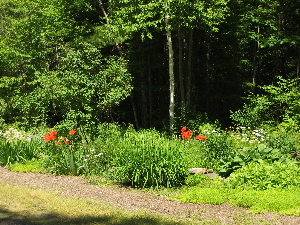MULCH WITH WOOL!
I got this from the National Gardening Association Newsletter.
"What’s Woolch Mulch?
While in England this past summer, I noticed gardeners using wool around plants that slugs love. It appears the wool deters the slugs and snails from eating the foliage. Well, here’s a new idea combining wool and mulch to create a new product for gardeners: Woolch. Made from 50 percent wool (a bi-product from yarn and blanket making industries) and 50 percent toothpick-size wood shavings (a bi-product from sawmills), woolch was developed by the Minnesota Lamb and Wool Makers Association and tested at the University of Minnesota. This combination of wool and wood shavings has been used on perennial fruits and vegetables such as strawberries with great success. Woolch prevents weed growth on top and below the mulch, retains soil moisture, keeps the soil cool, and lasts longer than other organic mulches such as straw. For strawberries it even allows the daughter plants to root themselves through the woolch material. The lightweight, felt-like mats of woolch can be cut to fit any fruit, vegetable, or perennial garden patch and generally lasts for 2 years in the garden before degrading in the soil.
For more information on this new organic mulch, go to: Minnesota Lamb and Wool Producers ."




